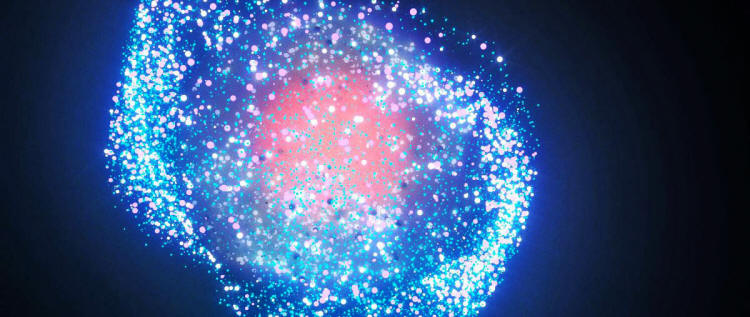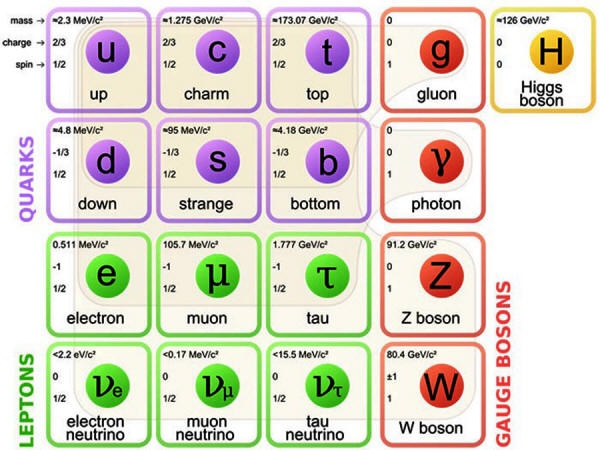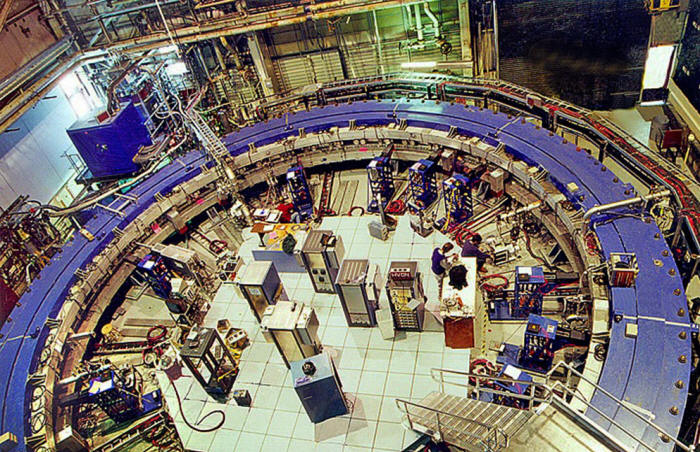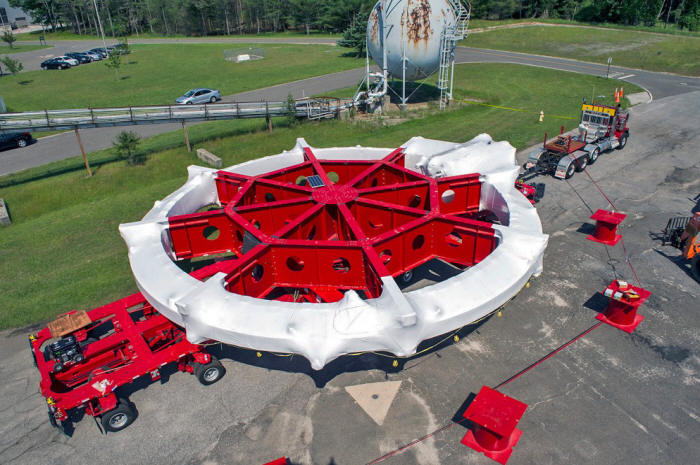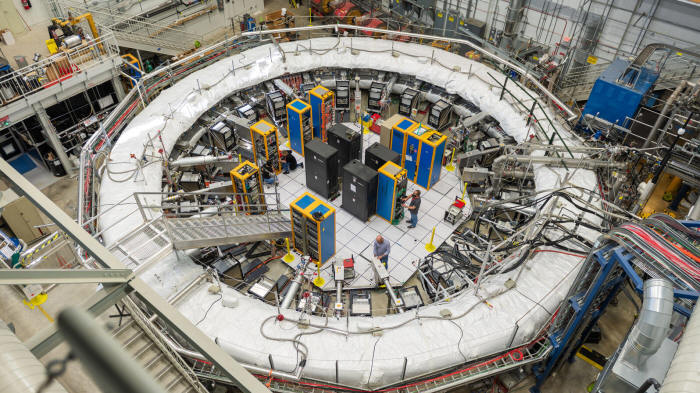|
by Charlie Wood June 25, 2025 from QuantaMagazine Website
Protons, neutrons and electrons seemed to account for atoms, and therefore all matter.
But when physicists inspected the debris left
behind as cosmic rays slammed into air molecules, they discovered
evidence of a second type of electron - a particle with precisely
the same electric charge, but some 200 times the mass.
Its entire raison d'être was unclear.
Over the following decade, physicists would flesh
out three generations of these families, which now form the
Standard Model of particle physics.
Standard Model of Particle Physics from Quantum Diaries.
For instance,
But why?
To understand if the muon is a true electron clone, researchers investigated its other characteristics, such as whether it feels the same forces as the electron.
In the 1960s, they started measuring the way muons wobble as they move through a magnetic field, a feature known as their "anomalous magnetic moment," referred to as "g–2" for esoteric reasons.
In experiment after experiment, the muon obeyed
precisely the same quantum laws as the electron.
Researchers at Brookhaven National Laboratory
(BNL)
in New York noticed that the muon's g–2 value seemed to differ from
what the Standard Model predicts by about 0.00036%.
DOE's Brookhaven National Laboratory Muon g-2 ring,
since moved to
Fermilab and rebuilt.
To see if the difference was a sign of new forces acting on the muon rather than a measurement error, physicists upgraded the experiment.
They loaded the ring onto a barge off the coast
of Long Island, then floated it down the East Coast and up the
Mississippi river.
DOE's Brookhaven National Laboratory finds a new home in the FNAL Muon g-2 experiment studio.
The move by barge and
truck.
In 2021, they announced that,
Physicists are desperate for clues about a more complete theory of the quantum world that goes beyond the particles and forces of the Standard Model.
If the muon g–2 discrepancy got any stronger, it would make history.
DOE's Fermi National Accelerator Laboratory Muon g-2 studio. As muons race around a ring at the Muon g-2 studio, their spin axes twirl, reflecting the influence of unseen particles. Photo: Reidar Hahn, Fermilab.
The challenge in predicting the outcome of a particle physics experiment is that the experiment can be thought of as playing out an infinite number of ways:
So physicists make predictions by focusing on the simplest events (those involving only a few steps) and ignoring the more complicated (and typically rarer) sequences of events.
They organize the comings and goings of particles
with visualizations known as
Feynman diagrams.
And one type of error in the muon g-2 calculation
is especially intractable.
Every possible event meddles with the muon equally.
Because the strong force is so powerful, even complicated events involving many transient particles make a big difference, so no part of the infinite string of possibilities can be safely ignored.
Prediction is futile, so physicists typically resort to painstaking experiments.
In the case of the muon's g-2 value, physicists turned to collisions involving electrons to get a sense of how often protonlike particles might appear:
In short,
In the new analysis, a team of more than 200 theoretical physicists managed to squeeze the key number out of pure quantum theory, relying on newly improved brute-force computer simulations of the strong force.
A major hope of particle physics has died.
This means that the fundamental mystery of the muon lives on.
And that mystery is:
|


